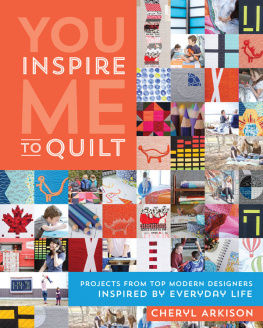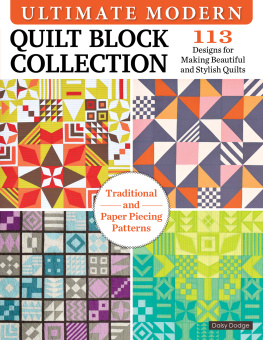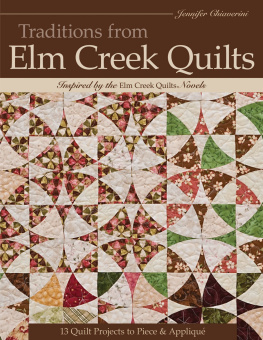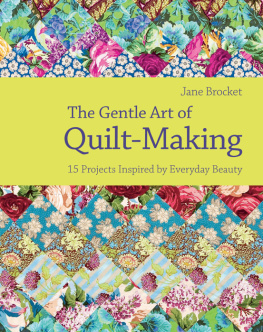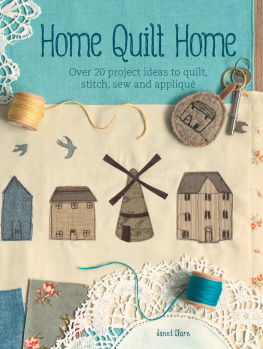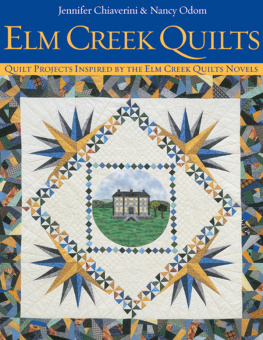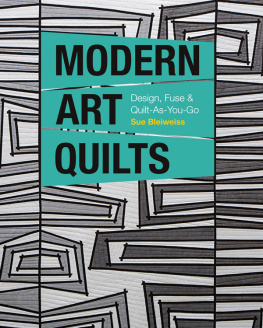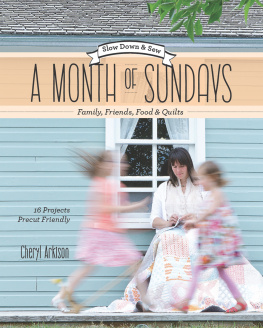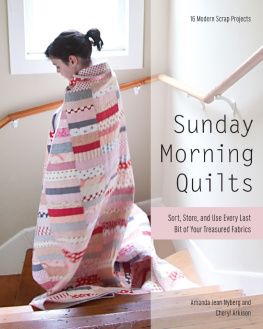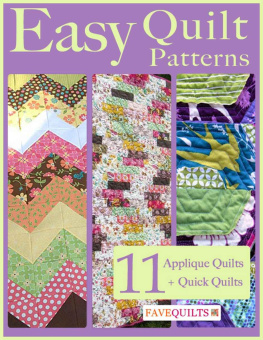Publisher | Amy Marson
Creative Director | Gailen Runge
Art Director / Book Designer | Kristy Zacharias
Editors | Lynn Koolish and Joanna Burgarino
Technical Editors | Helen Frost and Nan Powell
Production Coordinators | Freesia Pearson Blizard and Rue Flaherty
Production Editor | Katie Van Amburg
Page Layout Artist | Katie McIntosh
Illustrator | Valyrie Gillum
Photo Assistant | Mary Peyton Peppo
Style photography by Kate Inglis and instructional photography by Diane Pedersen, unless otherwise noted
Published by Stash Books, an imprint of C&T Publishing, Inc., P.O. Box 1456, Lafayette, CA 94549
DEDICATION
For Meredith Helgeson, who pushed me to become my own quilter
ACKNOWLEDGMENTS
Thank you to my husband, Morgan, for planting the earworm, for encouraging me despite his own stress, and for providing the opportunity to pursue my dreams. And to my children for continually hoping that this book will finally make me the famous quilter they so want me to be.
Thank you to Kate Inglis for letting me dump my ideas, churning them up, and then helping me pick them up off the beach. And for the collaboration when taking photos.
Thank you to Anna Grose and Jenn Jones for the continued support, babysitting, and understanding when I get a bit too crazy.
Thank you to all the contributors. And thank you to Lynn Koolish and the folks at C&T for making this a wickedly fun book to work on. It was tremendously inspiring for me.
Thank you to the companies that continue to invent and expand the portable technology that allows us quilters to capture the inspiration and sparks we see every single day.
Finally, thank you to all the quilters out there who snap photos, steal their kids markers, jot down ideas on grocery store receipts, and daydream in the school pickup line. You are the ones who inspire me to keep creating.
INTRODUCTION
My husband is extremely supportive of my quilting, often lending an eye or an ear to design dilemmas. I have to say, though, that his obsession with me making a certain quilt got out of hand. He mentioned it at least once a month for years. He brainstormed the inspiration, drew sketches, and got giddy thinking about it. Would he pick up a rotary cutter and make it himself? Heck, no! Instead, he kept pestering me until I made the quilt.
So I did. And it inspired this book.
In telling the story to other quilters, I discovered that I wasnt the only one hounded by the ideas and concepts of the nonquilters around me. So many more husbands, friends, parents, kids, and even store clerks had these ideas of what could make a cool quilt. Not all of them are feasible for a functional quilt (chain mail?), but most are indeed doable. Not all of them are immediately apparent as doable, but with some pestering and festering, the concept can become reality.
These ideas become quilts because they are a challenge. Despite the frustration, the limitations of the materials, and the walls of insecurity we build, we get satisfaction from rising to the occasion. Whether it is as simple as matching points or figuring out how to translate bacon into a quilt, I think there are two reasons why we do this.
One, we enjoy the technical aspect of the challenge. We are constantly pushing ourselves, whether we know it or not. With every quilt we make, our skills grow. Each quilt is often a little more difficult than the one we just finished. So taking on the seemingly impossible task of making a map quilt inspired by fantasy role-playing games is a creative challenge that can be hard to ignore.
And two, when those requests come from people we care about, it is difficult (impossible?) to say no. Whether they nag us to the point of an earworm or merely mention the idea in passing, we cant help but want to make them happy. Its what quilters do. More often than not the quilts we make are for others; its just that this time they are giving us the design idea instead of us trying the latest pattern. It is our loved ones providing the spark to our creativity.
It is then up to us to translate that spark of inspiration into an actual quilt. In all honesty, this is where many of us get bogged down. Just how do you take that nostalgic memory of Saturday nights watching hockey and actually turn it into a quilt? What is the process for designing, pattern drafting, and finishing the quilt?
This book captures the story of how we (myself and eight other quilters) did just that. Husbands, partners, nephews, and friends provided the spark. Sometimes working in silence, building to a surprise, and sometimes working collaboratively with our loved ones, we all took on the challenge to create these quilts. And we documented the creative process so we could share it with you.
The quilts in this book are a combination of the seemingly ridiculous and the absurdly cool. The inspirations range from technology to fantasy. The quilts are all made to functionthey are intended to be wrapped around legs, used as fort walls, or cuddled with on the sofa. At the same time, these are most definitely not Grandmas bed quilts!
Each quilt we make is a story and has a story. From the simple I just wanted to try this pattern or I really liked the fabric to I stopped on the side of the road to take a picture of a sign. The stories are inextricably tied to the quilt.
The projects in this book are broken down into as much detail and specific instruction as possible for that specific quilt. But if you are inspired to make your own date stamp quilt, feel free to change it up and make it your own. We are all dealing with similar creative challenges, the same demands on our time, and the never-ending push and pull of translating inspiration. Not to mention the requests from our loved ones.
While an equalizer-inspired quilt may not be on your own honey-do list, you might be able to persuade your own audiophile to add it instead of the turntable idea he hadwhy not? The kinks are already worked out for you.
Its easy to get caught up in the inspiration and ideas found online. If the digital realm ever gets overwhelming or discouraging, dont hesitate to turn off the computer or take a break from social media. So much of what we see online is an edited or manufactured view of the world. Remember that all quilters struggle with finding the time and only share what they want to shareas opposed to all of it. Keep this in mind when something seems too good to be true.
If group therapy has taught us anything, it is that we are not alone in our struggles. In chronicling the journey of a group of quilters from the initial inspiration to the final stitches, we get ideas of how to face and surmount the obstacles that are in the way. These ideas provide not only insight into the creative process but inspiration as well.
ON SEWING
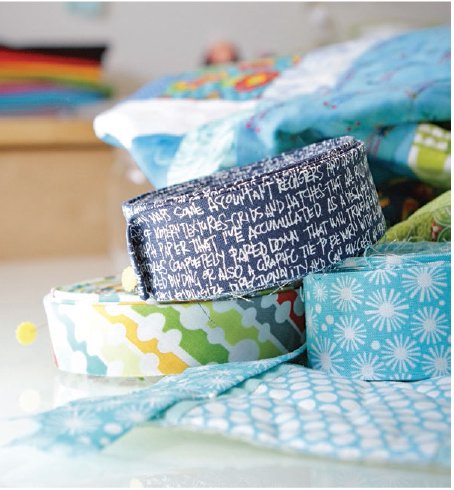
The quilts in this book range from simple to complex. The quilters who made them were focused on making the quilts they needed to make, the ones that complete their stories. They werent focused on making a twin-size quilt, for example. So the sizes vary widely, as do the techniques. But the following basics run across all the quilts.
All yardage requirements are based on a 40 width of fabric (WOF). If your fabrics are wider than 40 after you cut the selvages off, thats okay.
Press, or wash and press, your fabric before you cut.
Cut carefully. Take the time to cut all your pieces the exact size you need them to be.
Piece accurately. Use a scant seam allowance unless otherwise stated.
Backing and batting sizes are 4 larger than the quilt top.
Next page
